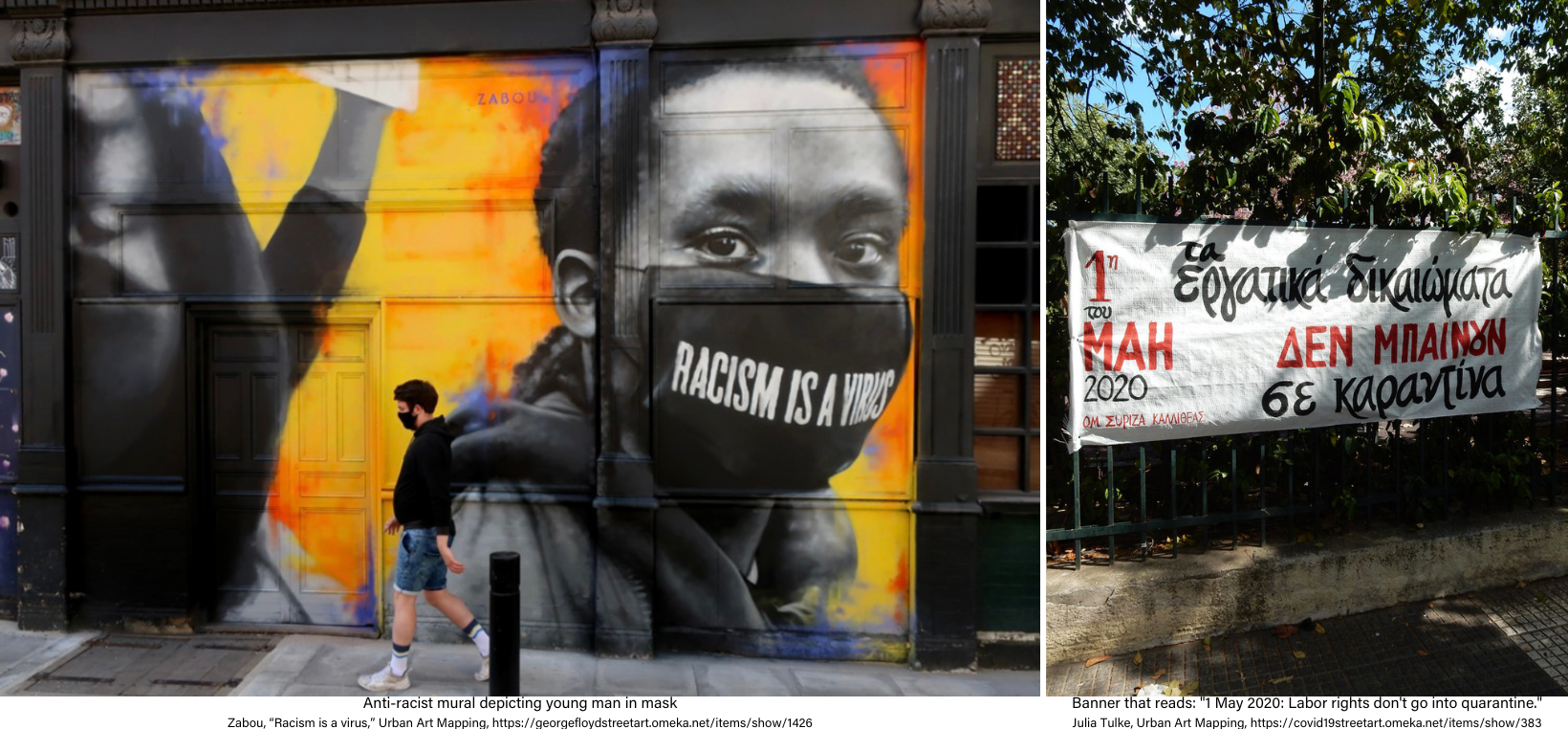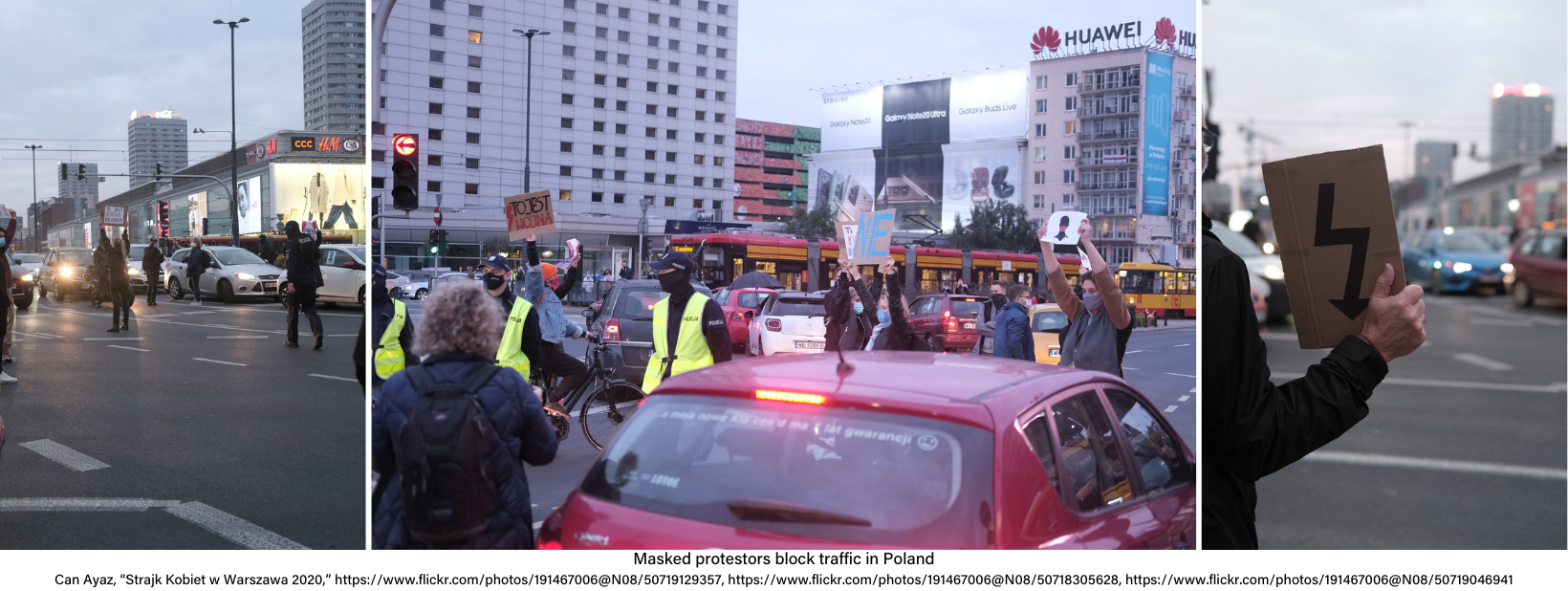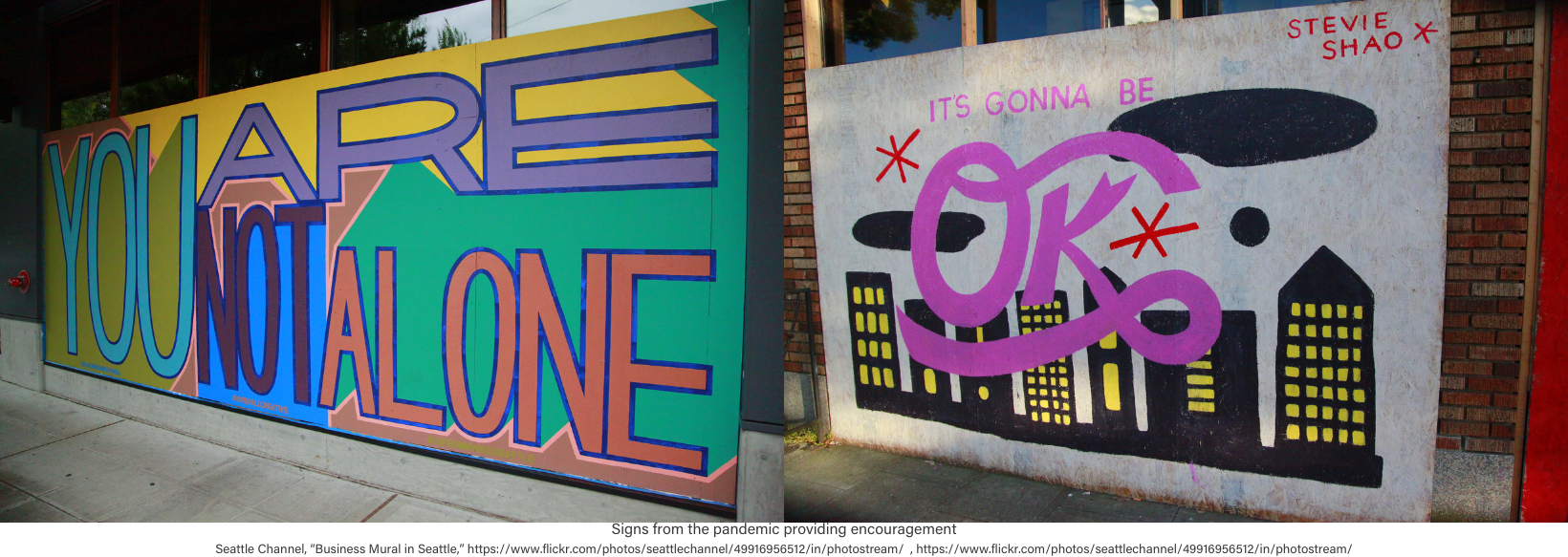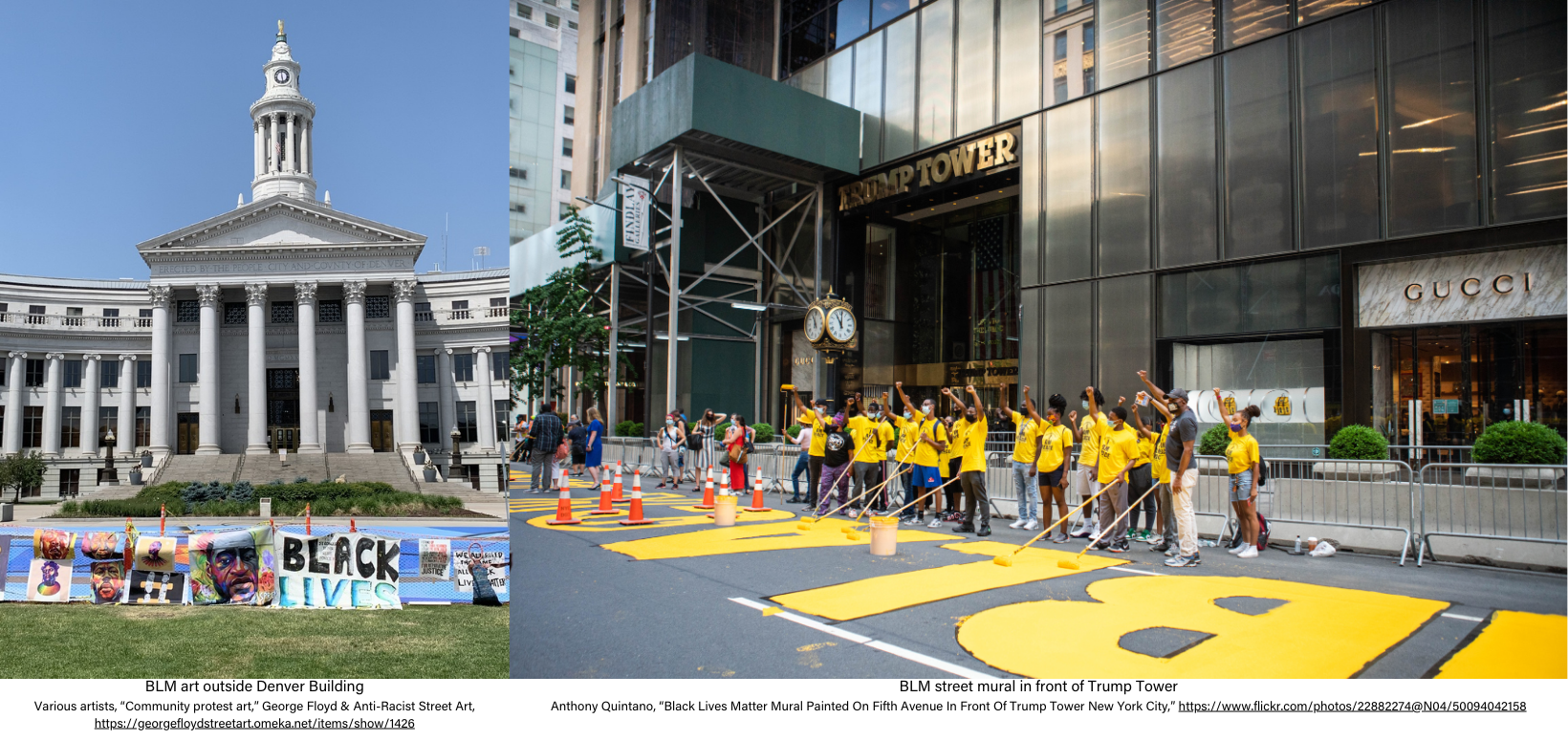This perspective was contributed by Grace McDonough, New Tactics in Human Rights Fellow and student.
Despite the return of in-person activities, we continue to feel the impact of the COVID-19 pandemic. As a university student in my last semester, I am continuously invited to look back at the last four years and the impact of the virus stretches far beyond disruptions to class in 2020. This pandemic completely changed everyday life for well over a year during its height, with billions isolating from each other and imposing strict limits on in-person interactions.
Yet this enormous change did not halt global activism despite organizers’ dependence on gathering people together in common cause. Rather, the pandemic seemed to witness a flourishing of participation in social justice and human rights movements. This felt especially clear in my home state of Minnesota as the murder of George Floyd launched a flurry of activism.
Revisiting pandemic protest strategies reveals how activists around the world leveraged both new and proven tactics to pivot and creatively adapt their work. Adaptations were extensive, impressive, and impossible to fully illustrate in a single article. Here, I underscore the breadth of innovation in response to COVID-19. Resources are linked throughout if you would like to learn more about the specific cases mentioned. I use these examples to explore some of the creative ways in which activists: 1) reimagined how to use physical space, 2) leveraged hybrid strategies, and 3) expanded online.
Projecting at Power: Large-scale Visuals
Activists adapted to the COVID-19 pandemic by turning towards unique ways to occupy physical space. These included both impressive projects at sites of power to demand change and smaller works in everyday landscapes.
Around the world, activists assembled a variety of large-scale visual demonstrations at important locations. Activists for migrant rights in Germany developed a series of actions outside of notable landmarks. Migrant rights organization Seebrücke first called on activists to
paint footprints and leave shoes outside of state institutions to stand-in for protests. Their campaign to #LeaveNoOneBehind and evacuate overcrowded refugee camps continued in their
placement of 13,000 empty chairs outside the Bundestag to represent each inhabitant of the Greek refugee camp Moria. In 2021, organizers created a
mosaic of decision makers and politicians outside the Bundestag to emphasize the importance of individual decisions as contributing to a broader landscape of exclusion. These projects required a group of dedicated activists to assemble a striking visual image, standing as testaments to persistent interest in landscapes emptied by the pandemic. This series of visuals by migrant rights activists further represented their commitment.
Other protest movements similarly constructed visuals explicitly meant to stand-in for a crowd. Youth climate strikers
left thousands of protest signs laying in front of the Bundestag around a central message to “Fight Every Crisis”. Artists put together a silhouette protest outside of McDonald’s Chicago headquarters to add an additional layer of support for striking workers. Activists used cardboard cutouts based on images of previous protestors demanding a $15 minimum wage. These creative representations insisted that real people stood behind the ideas of artistic displays.
Some protest works combined impressive size with art to draw attention. Black Lives Matter activists painted slogans on street surfaces and hung up art outside centers of
state,
city, and
business buildings. These tactics helped apply continuous pressure on decision makers, insisting that people would hold them accountable for their actions despite the pause on large physical gatherings.
Art in the Everyday
Creative expressions contributed to awareness-building beyond highly public areas. Artists and activists left important messages throughout the landscapes of everyday life. The mediums and messages of these projects varied. Despite their size, smaller artworks diffused important messages. Sidewalk chalk art expressed a variety of concerns, including
funding for healthcare and education and
the use of incarcerated labor. Germans further called on the government to support migrants by placing
signs, origami boats, and sidewalk art throughout their cities.
Activists also created larger projects in the landscapes of everyday life. Murals around the world celebrated Black Lives Matter and commemorated George Floyd. Pro-democracy activists in Serbia projected images on neighborhood buildings voicing their demands and encouraging others to protest. These protest works sometimes relied on the vocabulary of the pandemic to create urgency. Street signs drew connections between forms of discrimination like patriarchy and racism and the pandemic, links which added a sense of urgency and importance to enduring structural issues. These messages continued to build awareness and reflected enduring interest in key issues.

Reinventing Historical Tactics
In-person protests continued, sometimes exhibiting creative safety measures. Organizers in
Israel demonstrating against the Prime Minister’s contentious attempts at judicial overhaul and in
Germany standing against racism incorporated social distancing practices directly into protests, using tools like ribbons to form distanced human chains. Modifications to collective action kept protestors and communities safe while demonstrating an unwillingness to sit silently in the face of injustice.
Turning to Hybrid Organizing
Activists employed many alternative physical protest strategies in tandem with online forms of organizing, giving rise to hybrid movements. Hybrid protests grew both from online to offline and from offline to online.
Several of the examples already explored in this post also had important online components. The work of German migrant rights activists started as an online petition before evolving into efforts to take up physical space. Serbs uploaded their noisy protests under the hashtag #BukomProtivDiktature (Noise Against Dictatorship). These same platforms hosting protest videos served as space for activists in Serbia to share ideas and suggestions for organizing, creating a loop in which online activism drove in-person actions, which were then posted online.
The widely-covered women’s rights movement in Poland similarly leveraged hybrid organizing due to the pandemic. Posting pictures under hashtags like #ProtestAtHome, #StrajkKobiet (Women’s Strike) and #FalaSprzeciwu (Opposition Wave) complimented a variety of distanced in-person actions like protesting from cars, on bikes, and in grocery lines. The work of activists to block round-abouts brought Warsaw to a halt while allowing ample space between protestors.

Opportunity in Expanding Online
A highly visible protest movement before the pandemic, the global youth climate movement Fridays for Future (FFF) organized a variety of strategies to continue its high engagement. Its pivot online included a weekly webinar Talks for Future, continued strikes from school posted under #DigitalStrike or #ClimateStrikeOnline, and gatherings together on Zoom. A coalition of environmental activists in the United States including FFF organized Earth Day Live, a three day livestream of conversations, protests, and performances.
The transition online came with new advantages.Youth activists in the climate movement have suggested that the move online facilitated stronger international connections in the already global movement and higher visibility of marginalized voices. Similarly, activists in Chicago reflecting on the pandemic have underscored the opportunity to build coalitions with new organizations, organize more quickly, and reconsider accessibility in the online transition. The Free Youth Movement in Thailand saw the use of social media play a crucial role in involving previously disconnected young people in the country’s pro-democracy protests. The growth of online activism during this period seemed to invite the participation of new constituencies on important issues.
Challenges in the Newly Digital Environment
Online activism remains reliant on infrastructure vulnerable to suppression. Online protest movements from Belarus to Iran to Thailand witnessed intentional internet blackouts and government restrictions meant to stifle criticism. The new importance of video conferencing platforms like Zoom allotted these companies outsize power over the voices of some activists, including blocking the account of a Chinese human rights leader and censoring an event featuring a Palestinian political figure.
While online organizing pre-dates 2020, increasing dependency during the pandemic re-emphasized the opportunities for interconnectedness inherent in online activism, while underscoring its limitations and risks.
What We Can Learn
While many of the strategies used by activists in 2020 may seem relevant only to the particular context of the early pandemic, they reflect innovation and insistence.
In my view, the abounding adaptations amidst the pandemic highlight the persistent creativity of organizers in the face of an unprecedented challenge. These creative adaptations are successes that invite celebrating! Reflecting on these lessons learned from the pandemic equips activists to better face future challenges. These lessons are informative for navigating challenges far beyond the enduring impacts of COVID-19.
COVID-19 is neither the first nor last landscape-redefining obstacle activists face. Activists constantly face the need to adapt to changing circumstances that present similar challenges to the pandemic. Governments ban demonstrations, impose curfews, or attempt to limit the physical gathering of people in ways synonymous to isolation during the pandemic. Natural disasters might impose new circumstances for the movement of people.
The success of activists in fundamentally reimagining activism serves as a compelling testament to their ability to tackle the many challenges to come.

Header image by @MadebyAleix, Photographed by Kelsey Virginia Dufresne, "Mural of Protesters," Urban Art Mapping







